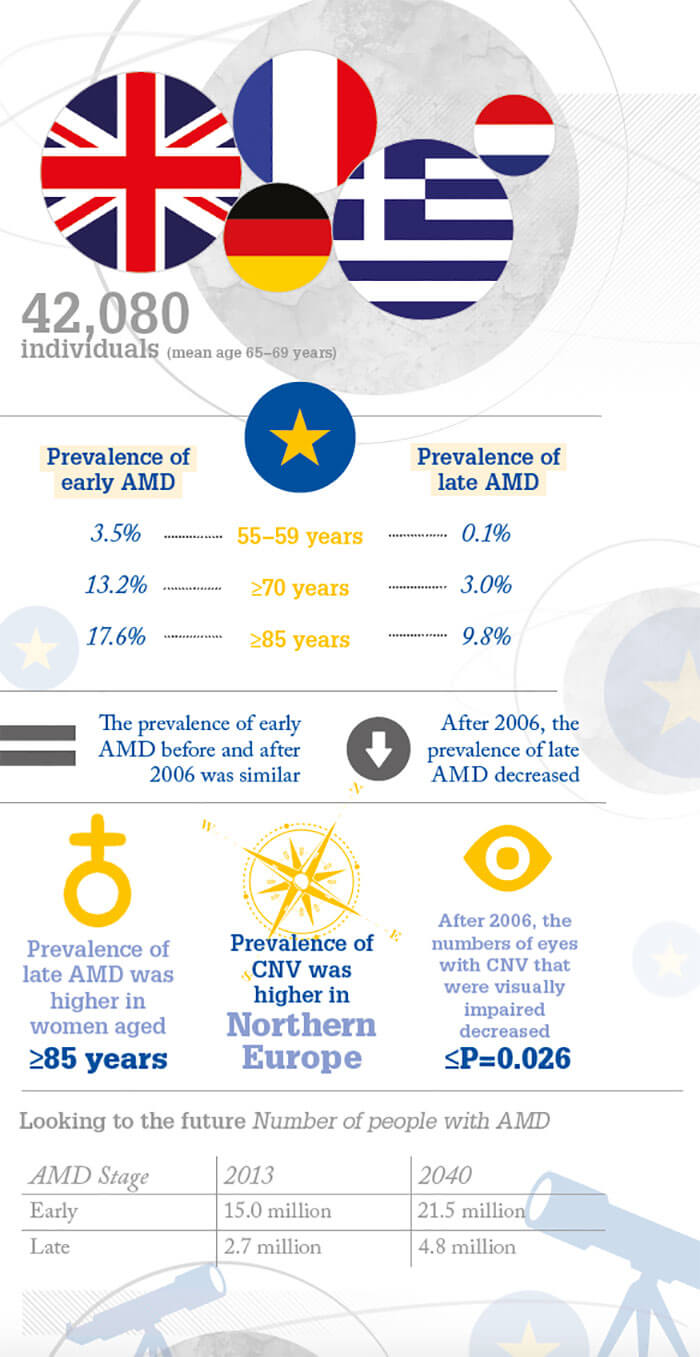
Age-related macular degeneration (AMD) is one of the most prevalent age-related eye diseases of our time. But as populations age – and treatments improve – how has disease prevalence changed across Europe over the past two decades?
Using the European Eye Epidemiology (E3) consortium, a large multi-center team performed a meta-analysis of prevalence data in Europe between 1990 and 2013 (1); over 42,000 individuals over the age of 40 were analyzed from 10 countries in Europe (Estonia, France, Germany, Greece, Italy, Northern Ireland, Norway, Netherlands, Spain, Portugal, and the UK). Determining prevalence of early and late AMD, the team also analyzed visual impairment, choroidal neovascularization (CNV), and changes in prevalence before and after 2006. We summarize the key findings in the infographic (right). Interestingly, though they found that the prevalence of early AMD remained stable and late AMD decreased before and after 2006, the team predicted that the number of people with AMD will increase by 2040 because of aging populations, indicating “a continuous need to develop comprehensive modalities for prevention and treatment of AMD.”
References
- JM Colijn et al., “Prevalence of age-related macular degeneration in Europe”, Ophthalmology, Epub ahead of print, (2017). PMID: 28712657.
